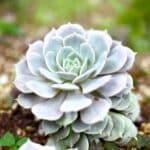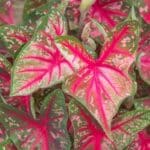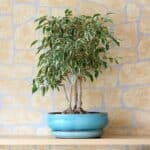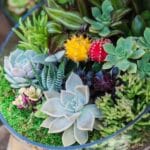One of the basic reasons we choose to grow certain plants in our garden may be because of their waxy leaves.
Plants with waxy leaves have this natural beauty that is pleasant to the eyes. They give any place they are planted, especially indoors, an astonishing look that is not quite difficult to attract on looking eyes as people walk along the path.
Some plants have not only this natural wax on their leaves but also their stems, fruits and other parts.
Today, we will be looking at some beautiful plants that have waxy leaves that you might consider growing in your home and garden.
Let's get started!
Table of Contents
Plants With Waxy Leaves
1. The Wax Plant (Hoya carnosa)
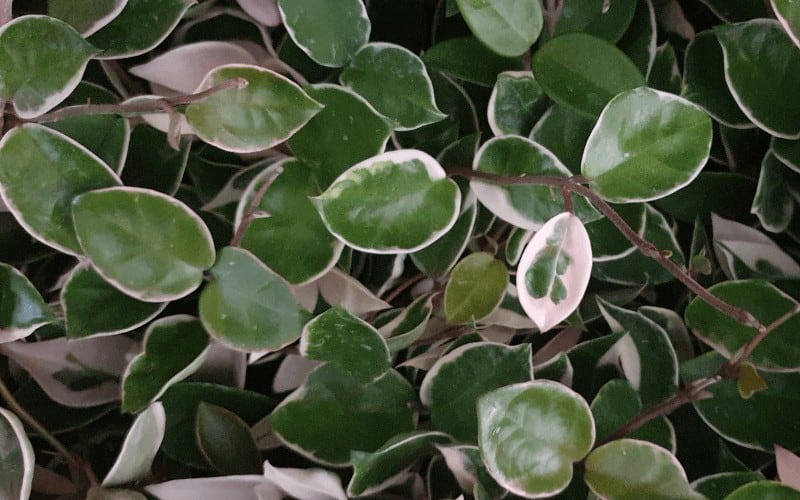
The wax plant has its origin in Eastern Asia and Australia and is commonly called porcelain flower.
It is a common houseplant that is grown because of its waxy leaves and beautiful flower smells. These make it attract attention easily, especially when they are planted indoors.
If you are not conversant with the Hoya carnosa, you could mistake it to be an artificial plant because of its extraordinarily bright leaves.
You can grow it both in pots and hanging baskets. Repotting of Hoya carnosa is best done during spring or summer. There are two simple ways on how to propagate hoya plant: by rooting stem cuttings in water or a mix, and by layering.
Read Also: Hoya Krimson Queen Vs Princess
2. Alocasia Polly (Alocasia amazonica)
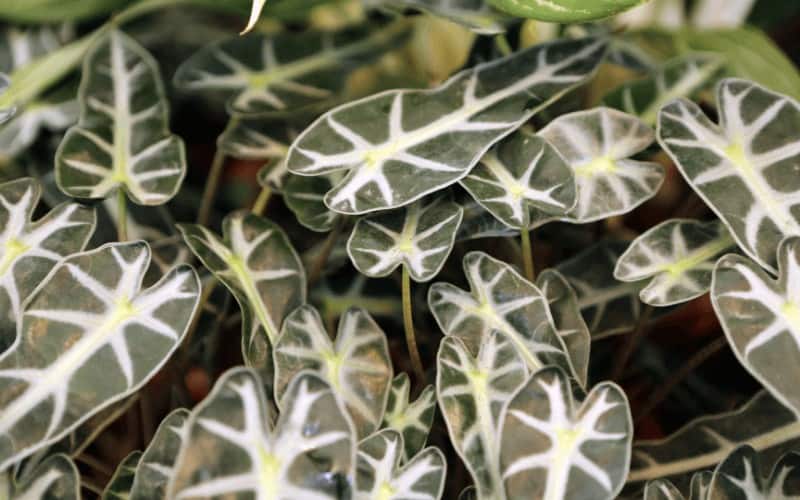
This is a huge hybrid tropical plant that originated from Asia. It has other names like the African mask plant or the Amazonian elephant’s ear.
It has wide glossy dark green leaves with noticeable light green veins making the leaves distinct. These unique features make the alocasia polly stand out from other plants.
Propagation of alocasia polly is best done during the warm season, as it has a dormant time in the late fall and winter. During this period, it intermits its growth.
3. Jade plant (Crassula ovata)

The Jade plant is also known as money plant, money tree, or lucky plant, is a very common houseplant across the world though; it has its native origin in many parts of South Africa. It is common because it doesn’t require much care to grow.
It is one of the most impressive plants with waxy leaves. We know it for its juicy, sparkling, and smooth leaves.
However, it does not produce many flowers and does not bloom regularly, because gardeners mostly grow it for its lovely miniature-tree look and glossy nature.
4. Peace Lily (spathiphllum wallisii)

The peace lily is a tropical perennial indoor plant in the genus Spathiphyllum. It blooms mostly during spring and can produce flowers many times a year.
Peace lily does not grow big; it has several thick dark-green bright leaves which can give any place a pleasant look.
When flowers shoot from between the leaves, they give an awesome contrast with the waxy leaves of the plants.
If you have little space for a tropical plant and you desire to grow green leafy houseplants, then the peace lily will be an excellent choice for you.
5. Swiss Cheese Plant (Monstera deliciosa)

The Swiss cheese plant, also known as Swiss cheese vine, fruit salad plant, delicious monster, fruit salad tree etc, is an evergreen tropical. You can grow it both indoors and outdoors, but in many climates, they grow it as a houseplant.
For spacious living rooms or large halls, it is a wonderful choice as it can reach a height of over 30ft (9m).
Believed to be an effective plant for cleansing the air according to NASA research, It has perforated heart-shaped leaves of dark green color.
6. Heart Leaf Philodendron (Philodendron hederaceum)
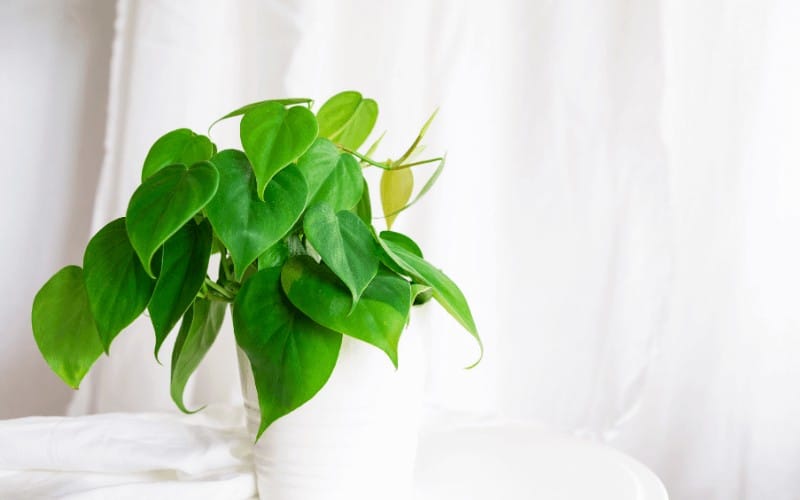
This is a species of one of the evergreen flowering plants that are native to Central America and the Caribbean. Another name for this plant is the sweetheart plant.
It is a climbing plant which, if left to climb hanging baskets or allowed to freely trail on shelves, it will do excellently well. Its stems can spread between 10 to 20 ft (3-6m) making it a good ornamental plant.
Its leaves look so nice that you may think it is an artificial plant made from plastic material.
The heartleaf philodendron is quite easy to grow. Its leaves are as large as that of a cocoa yam plant.
Studies have also revealed, just like monster deliciosa, that the heartleaf philodendrons are very effective in removing harmful chemicals in the air.
7. Dwarf Umbrella (Schefflera Arboricla)
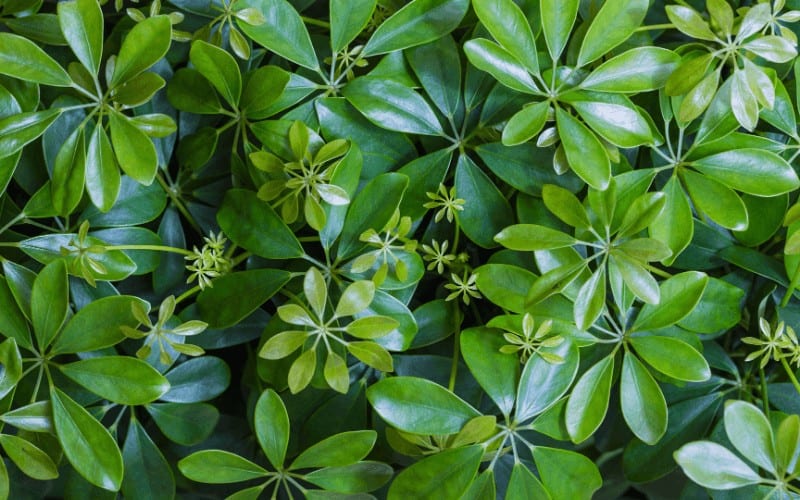
This is a perennial shrub that can be grown both indoors and outdoors and can reach heights of between 10 and 20 ft (3-6m).
The chefflera arboricola can be grown as bushes, trees, and also as bonsai. It is the small brother of Schefflera actinophylla (umbrella tree) which can attain a height up to 50ft (15m).
Its leaves grow together and possess the shape of an umbrella, hence the name “umbrella tree”. Dwarf umbrella plants have thick, glossy, and dark green leaves.
8. Desert Rose (Adenium obesum)
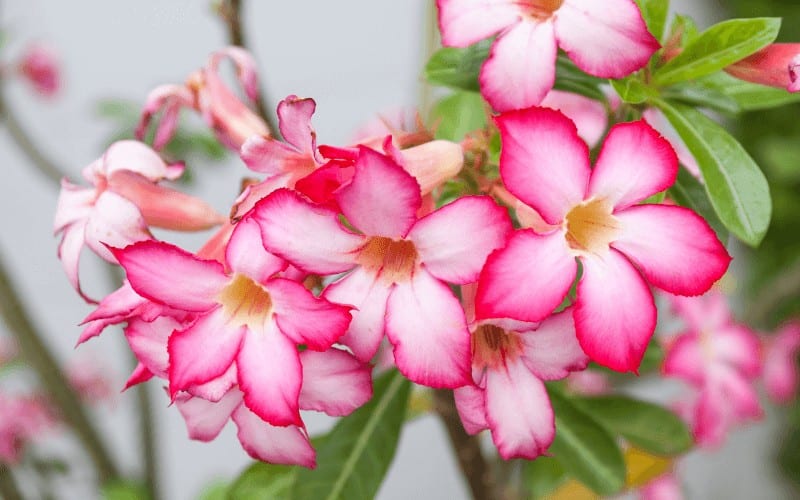
The desert rose is a slow-growing plant suitable to be grown as bonsai. If you understand how to prune the desert rose correctly, you can obtain an excellent miniature flowering tree with an amazing life span.
Desert rose is an evergreen succulent plant with origin from desert areas of Africa and Asia. The plant is also known as kudu, mock azalea, Sabi star, and impala lily.
Its flowers are beautiful and are often a combination of three colours of red, white and pink. Its leaves are arranged in spirals.
9. Rubber fig tree (Ficus elastica)
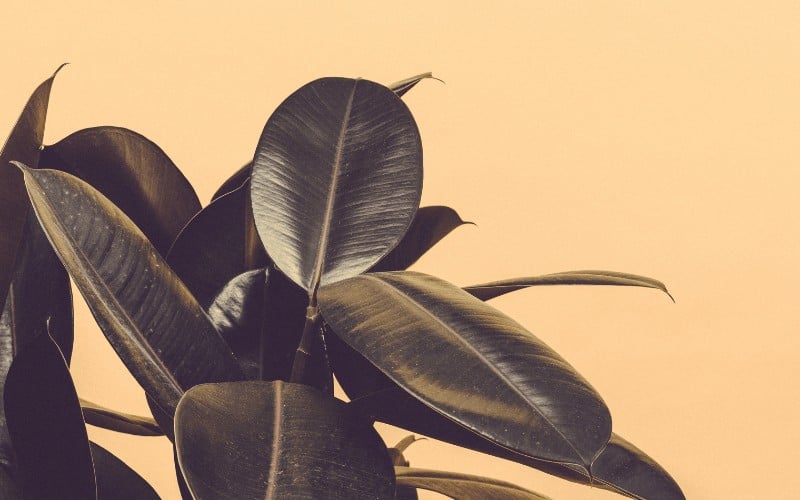
Rubber fig is also one of the plants with waxy leaves. When considering plants to grow for purpose of beautification, it is a good choice.
Other common names for the plant include rubber bush, rubber tree, rubber plant, Indian rubber tree and Indian rubber bush.
The name “rubber fig” was derived from the fact it has milky white latex used in rubber production.
Rubber fig can develop into a large tree of about 115ft (35m) in the rain forest. In colder climates, it is grown as an indoor plant and outdoors plant in frost-free regions.
It has wide and bright oval leaves with colors ranging from light to dark green. Others might have more colors depending on the varieties.
10. Flaming Katy (Kalanchoe blossfeldiana)
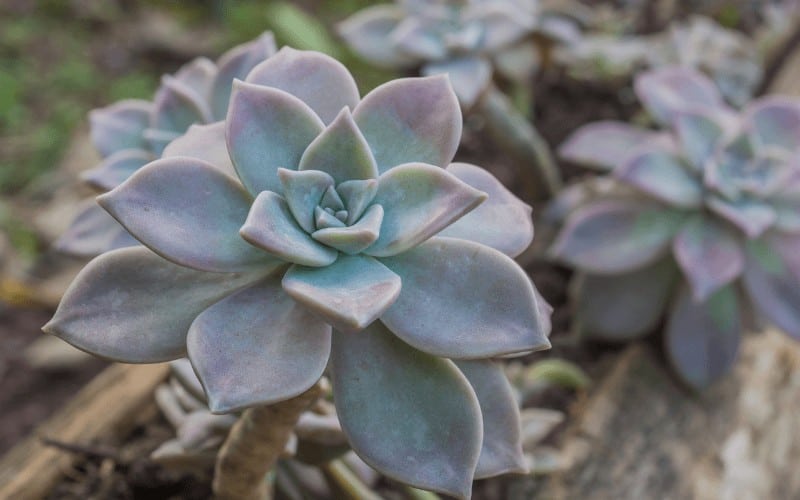
This is a bushy plant that originated from Madagascar, the country in Africa. Gardeners also know it as Christmas kalanchoe, florist kalanchoe or Madagascar widow’s-thrill.
It is grown as a houseplant. Its leaves are dark green, with rough and ovate edges.
Due to its bright smooth leaves and attractive flowers, the flaming katy is more common in most gardens.
It often blooms from late autumn to early winter and produces varieties of colours such as red, orange, gold, white or pink.
11. Anthurium flower

We can only grow anthurium plant in mild sunlight as exposing it to direct sunlight will burn its leaves. However, it takes less time to grow and with few flowers.
One of the common diseases of anthurium is root rot. This happens if left permanently in moist soil. Though it does not like too much moist soil, someone should provide regular water with caution.
Anthurium is known for its long-lasting flower.
12. Carissa Holly

Carissa is also a plant with waxy leaves that can adapt to any type of landscape. However, it is a slow-growing plant and requires occasional pruning as well.
It doesn’t require much maintenance once established. It does not require frequent application of water but might need fertilizer in spring.
Carissa holly can withstand drought, wind, and as well as hot weather.
13. Radiator Plant (Peperomias)
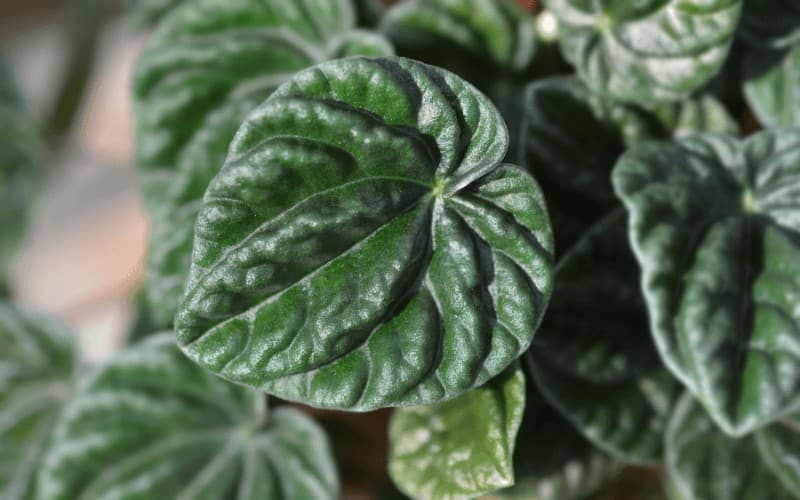
If you are looking for houseplants with many flowers, then you need to consider peperomias. It has smooth leaves of different colours of grey, purple, green, and red.
Just like the Carissa holly, peperomias do not require frequent watering. It does not need too much sunlight to grow as an indoor plant.
14. Swedish Ivy
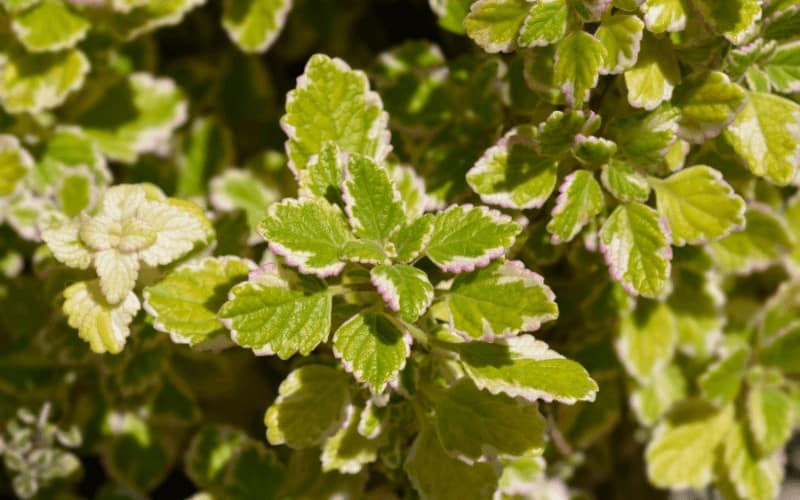
Swedish ivy is a hanging basket houseplant, so they know it for its trailing nature.
For gardeners who have had little experience, Swedish ivy can be a good start them.
It does not require too much water. So, we apply water only when necessary. But you ensure to dry the soil before you water it again.
15. Zanzibar Gem (Zamioculcas Plant)
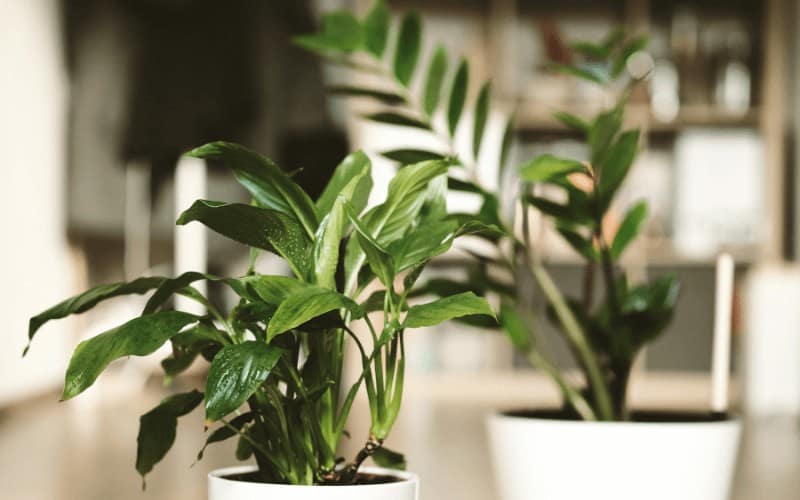
Native to Eastern Africa and commonly known as ZZ plant or aroid palm, Zamioculcas Zamiifoliais is a popular plant among plant collectors. The plant is quite attractive and grows beautiful, dark green leaves.
ZZ is easy to maintain as it tolerates neglect and can thrive very well in low-light conditions. The waxy leaves help to brighten up any room they’re grown at.
Furthermore, it’s a slow-growing plant, which means that it won’t become a plant monster, occupying plenty of space.
Interestingly, Zanzibar Gem is equally a natural air purifier – and according to NASA, the plant is also good at getting rid of copious amounts of toxins such as benzene, toluene, and xylene from the air.
ZZ plant does not require any specific type of soiling to grow and it only needs watering once a month.
16. Mistletoe Fig (Ficus deltoidea)
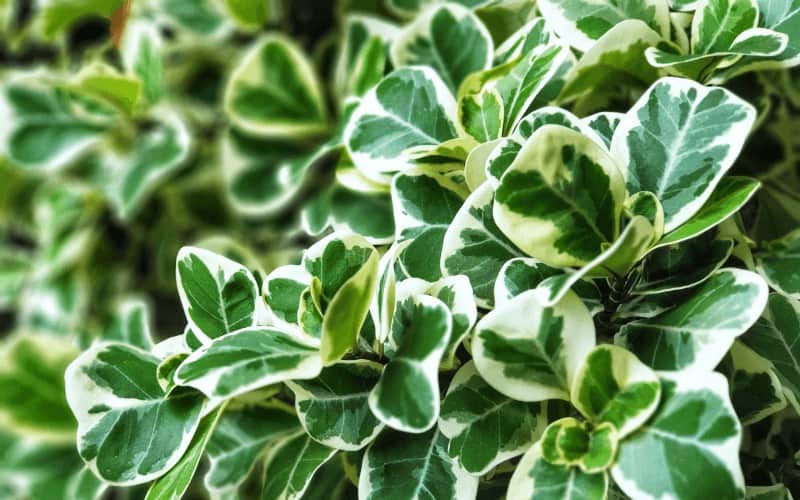
Mistletoe Fig is native to Southeast Asia and is also called a large shrub or a small tree. It’s an excellent indoor houseplant and can grow up to 3 feet tall. It produces glossy and waxy green leaves – and yellow undersides.
The plant also grows non-edible, yellowish figs. It thrives in dry soil and requires medium to high light to survive. Mistletoe Fig can also survive in low light conditions.
You will want to keep it away from direct sunlight areas as that may lead to its leaves getting burnt. It thrives in summer periods in the colder zones.
17. Bromeliad (Bromeliaceae)
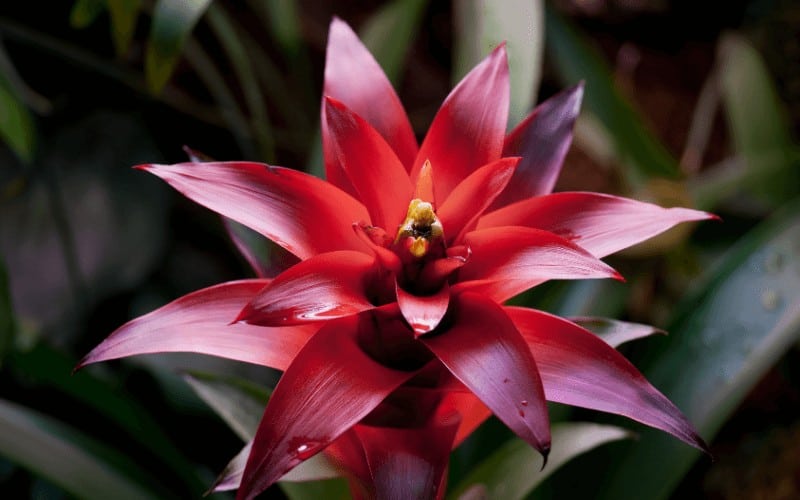
Originated mainly from the tropical Americas, Bromeliad belongs to the monocot flowering plants family, which has about 75 genera and 3590 known species.
Some species of the plant are also found in the American subtropics and one species (Pitcairnia Feliciana) in tropical west Africa.
Bromeliad has an unusual appearance, which gives some people the impression that it would be difficult to maintain but it’s not. The plant has a spectacular texture and colors, making it look super beautiful in any garden. It’s also a fantastic indoor houseplant.
The plant needs medium to bright sunlight to thrive indoors. Also, bromeliads require more humidity in hot weather conditions – and it’s not advisable to keep their central cup filled with water.
FAQs About Waxy Leaf Plants
Why would a plant have thick waxy leaves?
Many desert plants have a thick, waxy covering on their leaves and stems. This waxy substance helps to cover most of the leaves, which helps to keep the plants cooler and minimize evaporative loss.
How do waxy leaves reduce water loss?
The leaves of all plant species are covered by a waxy layer known as the cuticle. This cuticle helps to lessen the rate of water loss from the leaf surface – and they can equally lessen transpiration rate by blocking out airflow across the leaves.
Where are waxy leaves found?
Waxy leaves are often found in plants that grow in arid zones of USDA zones 9 to 11. These plants use waxy leaves to retain water and reduce transpiration. Waxy leaves also help to protect leaves from the very cold temperatures that are usually found in the desert.
Why do trees have waxy leaves?
Basically, the waxy cuticle on the epidermis is very essential as it helps to protect the photosynthetic cells in the lower part of the mesophyll. Also, the waxy cuticle is the outermost part of the tree leaf, which makes the needles feel more efficient.
Does Gabi have waxy leaves?
Yes, Gabi has large, green, waxy leaves on the upper surface that looks like downward-pointing hearts.
Read Also: Plants With Red Stems
Conclusion
Plants with waxy leaves come in different varieties as highlighted by this article, and of different colours as well. Many of these plants are grown indoors.
Growing and caring for most of these plants is extremely easy provided all conditions required for their optimum performance are met as they require little attention.
Though there are over 14 various plants with waxy leaves, this article only considered 14 of them of which if you observed, you would notice have similarities.

